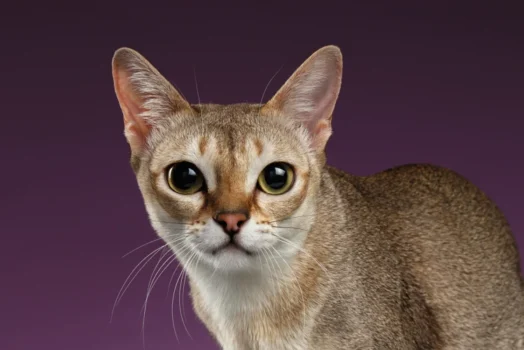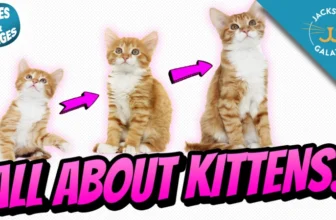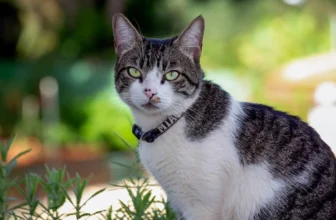The American Wirehair Breed
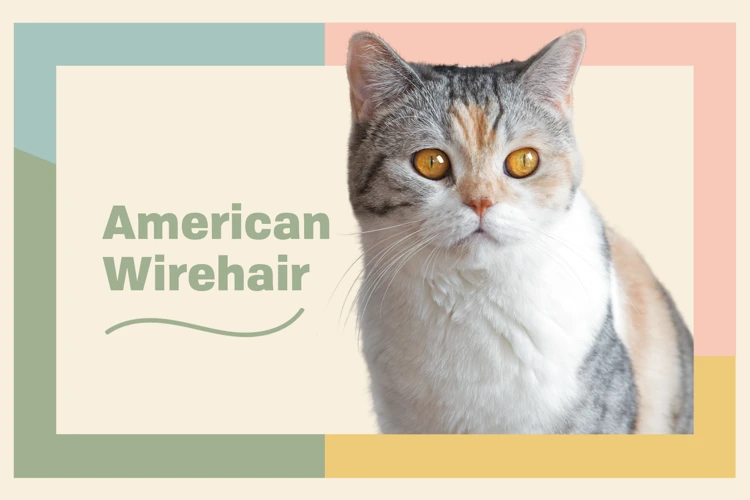
The American Wirehair breed is a relatively new breed, having been created in the United States in the mid-1900s. This breed is known for its unique wiry and crimped coat, which is due to a spontaneous genetic mutation. American Wirehairs tend to have a stocky build, rounded ears, and copper-colored eyes. They are also known for their playful and affectionate personalities, making them popular among cat lovers.
However, it is important to note that like all breeds, American Wirehairs are not immune to genetic health issues. These issues can arise as a result of inbreeding or other breeding practices that do not prioritize genetic diversity. It is up to breeders to ensure that they are promoting the health and well-being of these cats through responsible breeding practices.
For more information on the genetics of American Wirehairs and potential health issues, check out our article on genetics and American Wirehairs. You can also read about five common genetic diseases that affect this breed on our page 5 Genetic Diseases in American Wirehairs.
What is Genetic Diversity?
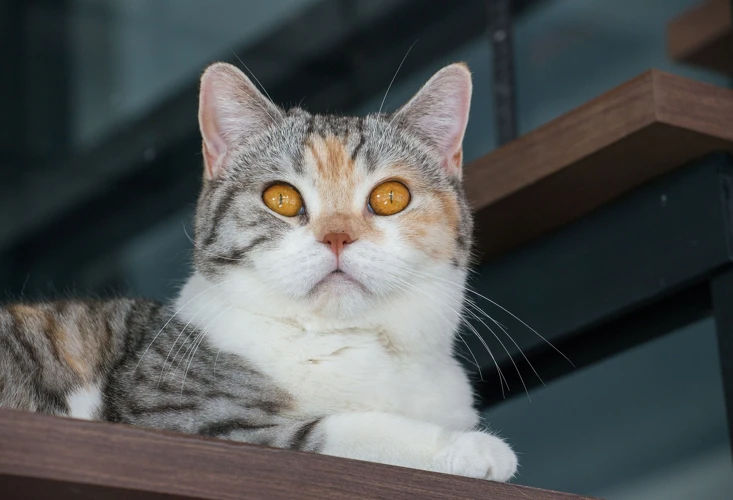
Genetic diversity can be defined as the variation of genes within a particular species or population. The genetic makeup of every individual, including American Wirehair cats, is unique due to the presence of genetic diversity. The genetic diversity of a population is essential because it allows individuals to adapt and survive in ever-changing environments.
However, selective breeding of American Wirehair cats can reduce genetic diversity over time, leading to health issues in the breed. Breeding programs that do not take genetic diversity into account can end up producing litters of cats that are more susceptible to certain diseases or genetic disorders.
The breeding process can create genetic variation over generations. However, this process can also reduce genetic diversity by limiting the available gene pool in each generation. This reduction in genetic diversity can result in more inbreeding, which further increases the risk of genetic disorders.
Ensuring genetic diversity in American Wirehair breeding programs is critical to the health and longevity of a breed. Breeders must take this into account when selecting cats for breeding. It is essential to choose cats with a diverse genetic background to maintain genetic diversity in the breed.
Genetic testing can help breeders make informed decisions about which cats to breed. By testing for specific genetic conditions, breeders can avoid passing on certain disorders to future generations. Genetic testing can also help identify individual cats with good genes that can contribute positively to the breed.
Breeders can also consider selective breeding techniques when attempting to maintain genetic diversity in the breed. By breeding cats with different traits, breeders can create genetic variation in future generations.
Ultimately, maintaining genetic diversity in American Wirehair breeding programs is critical to ensuring the long-term health and welfare of the breed. By staying informed and conducting regular health checks, breeders can make informed decisions and minimize the risks associated with inbreeding and genetic disorders.
The Importance of Genetic Diversity in American Wirehair Breeding Programs

When it comes to breeding American Wirehair cats, maintaining genetic diversity is of utmost importance. By ensuring that your breeding program includes a variety of genetic traits, you are not only promoting healthier kittens, but also safeguarding the long-term viability of your breeding lineage. Let’s take a closer look at why genetic diversity is an essential factor in American Wirehair breeding programs and how it can ultimately impact the health and welfare of your feline companions.
Enhances Disease Resistance
One of the primary benefits of maintaining genetic diversity in American Wirehair breeding programs is that it enhances disease resistance. A diverse gene pool provides a greater chance that some cats will possess natural immunity or resistance to various diseases.
Research has shown that a lack of genetic diversity can increase the likelihood of disease susceptibility in cat breeds. For instance, cats who are bred with close relatives are more likely to inherit harmful recessive traits that lead to genetic disorders such as heart disease, respiratory issues, and skin problems.
However, by breeding from a diverse gene pool, breeders can reduce the prevalence of these disorders and increase the overall health of the breed. To better understand the importance of genetic diversity in disease resistance, let’s take a look at a few examples.
| Disease | Effects | Impact on Breeding Program |
|---|---|---|
| Feline Infectious Peritonitis (FIP) | Causes fluid build-up in the abdomen, leading to organ damage and death | By selecting cats with a diverse range of immune systems that have proven resistance to FIP, breeders can reduce the incidence of this deadly disease in their lines. |
| Hypertrophic Cardiomyopathy (HCM) | Affects the heart, making it difficult to pump blood and leading to heart failure | Outcrossing with cats from different bloodlines can reduce the risk of inheriting this disease and increase genetic diversity overall. |
| Polycystic Kidney Disease (PKD) | Forms cysts in the kidneys, leading to kidney failure and death | Regular health checks and pedigree analysis can help identify cats that carry the gene for PKD, allowing breeders to avoid mating them and reduce the prevalence of this disease in their lines. |
By taking steps to maintain genetic diversity in their breeding programs, American Wirehair breeders can reduce the incidence of these diseases and improve the overall health of their cats. It’s up to breeders to ensure that they are breeding from a diverse range of cats to produce healthy, robust offspring with the greatest possible chance of disease resistance.
Provides a Broader Gene Pool
One of the significant advantages of genetic diversity in American Wirehair breeding programs is that it provides a broader gene pool. This means that by having a diverse genetic makeup, the breed will have access to a greater number of advantageous genes that can improve the overall health, appearance, and temperament of the breed.
A broader gene pool also means that breeders have more options available to them in terms of selecting mating pairs. When breeders have access to a range of diverse and healthy genes, they can select viable mates that will produce offspring with the best traits from both parents. This process is called hybridization, and it can greatly enhance the quality of the breed.
Here is a table that outlines the benefits of a broader gene pool in American Wirehair breeding programs:
| Benefits of a Broader Gene Pool | |
|---|---|
| Increased Genetic Variability | Having a diverse gene pool can increase the genetic variability of the breed, which is essential for maintaining a healthy population. |
| Improved Disease Resistance | A broader gene pool can increase the likelihood of having genes that provide disease resistance, making the breed less susceptible to certain health problems. |
| Better Temperament | Breeding from a diverse gene pool can help to reduce temperament issues that might arise from inbreeding, as well as introducing desirable temperamental traits. |
| Enhanced Physical Characteristics | Genetic diversity can result in puppies with enhanced physical characteristics, such as a thicker coat or brighter eye color. |
As you can see, there are many advantages to maintaining a broader gene pool in American Wirehair breeding programs. By promoting genetic diversity, breeders can ensure the continued health and welfare of their breeding lineage while also improving the overall quality and appearance of the breed.
Reduces Genetic Defects
When it comes to breeding American Wirehair cats, reducing genetic defects should be a top priority for any ethical breeder. One of the best ways to achieve this is by promoting genetic diversity. Here are some ways in which genetic diversity can help reduce genetic defects in your breeding program:
- Minimizes the Risk of Inherited Diseases: Inbreeding increases the likelihood of inheriting genetic disorders. When breeders use a limited gene pool, certain genetic disorders can become prevalent, leading to increased health issues in the offspring. Maintaining genetic diversity through outcrossing, for example, can reduce the risk of inherited diseases.
- Prevents Harmful Genetic Mutations: When a breeding program relies on a limited gene pool, the risk of deleterious genetic mutations can increase. By introducing new genes to the breeding pool, you can reduce the likelihood of inheriting harmful mutations and lead to healthier offspring.
- Helps Maintain Heterozygosity: Heterozygosity refers to the level of genetic variation within a breeding population. When the majority of individuals in a population share similar genetic traits or are related, heterozygosity decreases. Lower heterozygosity can increase the likelihood of inherited diseases as well as negative traits like temperament issues or decreased fertility. By maintaining heterozygosity through genetic diversity, negative traits can be minimized and healthier offspring can be produced.
Promoting genetic diversity through various means can benefit not only the health and well-being of individual cats but also the sustainability of American Wirehair breeding programs in the long run. As a breeder, it’s important to prioritize the health of your cats and their offspring by taking an active role in promoting genetic diversity.
Ensures Long-Term Health and Welfare of Your Breeding Lineage
Maintaining genetic diversity in American Wirehair breeding programs is crucial for the long-term health and welfare of the breeding lineage. By prioritizing genetic diversity, breeders can ensure that their cats remain healthy and vibrant, with a reduced risk of genetic disorders and a more robust immune system.
1. Prevent Inbreeding Depression: Inbreeding depression occurs when closely related individuals reproduce, resulting in a decrease in the overall fitness of the offspring. Over time, inbreeding depression can lead to a weakened immune system, higher mortality rates, and an increased likelihood of genetic disorders. By maintaining genetic diversity in breeding programs, breeders can help prevent inbreeding depression and its negative consequences.
2. Produces Healthier Offspring: Genetic diversity allows for a broader range of traits to be expressed in offspring, which can result in healthier cats. A diverse gene pool helps to create cats with stronger immune systems and a better capacity to resist disease.
3. Expands the Gene Pool: By ensuring genetic diversity, breeders can expand the gene pool and create a more diverse population of American Wirehairs. This, in turn, can help to improve the overall health and wellness of the breed, as well as reduce the likelihood of genetic disorders.
4. Improves Resilience: Breeding programs that prioritize genetic diversity produce cats that are more resilient to environmental stressors and changes. These cats are better equipped to handle new environments, diets, and other changes in their lives, resulting in a healthier, happier cat.
Maintaining genetic diversity in American Wirehair breeding programs is crucial for the long-term health and welfare of the breeding lineage. By expanding the gene pool, preventing inbreeding depression, and producing healthier, more resilient offspring, breeders can help create a strong, diverse, and healthy breed for years to come.
The Risks of Inbreeding
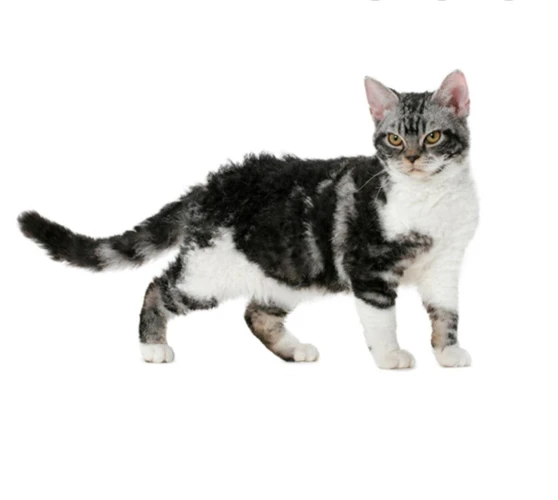
Maintaining genetic diversity is crucial for the long-term health and welfare of American Wirehair cats, and inbreeding can pose serious risks. Inbreeding occurs when closely related cats are bred together, resulting in a limited gene pool. While it may seem like a shortcut to producing desired traits, inbreeding can have dire consequences. Let’s explore some of the risks associated with inbreeding and why it’s important to avoid it.
Increased Likelihood of Genetic Disorders
As with all living organisms, the American Wirehair breed is subject to genetic disorders and diseases. The risks of breeding closely related cats are substantial. Inbreeding can lead to a higher likelihood of genetic disorders that may have a profound effect on the cats’ health.
These genetic disorders can include:
- Congenital heart defects
- Kidney disease
- Liver disease
- Orthopedic abnormalities
- Severe allergies
- Permanent blindness
If a feline is subjected to continuous inbreeding, there is a high likelihood that some genetic disorders will be transferred from one generation to the next. As a result, the owner may need to face the emotional burden of seeing their beloved pets suffer from genetic conditions that could have been prevented by increasing genetic diversity.
It is essential to understand that no feline is immune to the risks of acquiring or passing on genetic disorders that may result from inbreeding. Breeders must take responsibility for ensuring that the cats which they breed are not genetically related. By doing so, they can help reduce the likelihood of genetic disorders and promote the long-term health and welfare of the American Wirehair breed.
It is critical for owners and breeders to prioritize genetic diversity in their breeding programs. By doing so, they can help mitigate the risks of genetic disorders and ensure the overall health and longevity of the American Wirehair breed.
Higher Mortality Rates
Inbreeding can lead to higher mortality rates in American Wirehair cats. This is because when closely related cats are bred, there is a higher likelihood of genetic defects being passed down. These defects can result in anything from physical deformities to internal organ malformations.
In particular, the immune system is often adversely affected by inbreeding, as certain genes responsible for disease resistance can be weakened or even lost altogether. This can lead to a higher susceptibility to infections and illnesses, which can ultimately result in premature death.
Additionally, inbreeding can create a smaller gene pool, which can exacerbate any existing genetic health issues. In the worst cases, the impacts of inbreeding can even lead to the extinction of a breed.
It is essential that breeders take measures to maintain genetic diversity in their breeding programs to avoid the increased mortality rates associated with inbreeding. By doing so, breeders can ensure that their American Wirehair cats have the best chance of leading a long and healthy life.
How to Maintain Genetic Diversity in Breeding Programs

Breeding programs play a crucial role in maintaining genetic diversity for the American Wirehair breed. However, ensuring that these programs are effective and sustainable requires careful planning and maintenance. In this section, we will explore several strategies and best practices that breeders can use to maintain genetic diversity in their breeding programs. From conducting regular health checks to keeping detailed records, these methods can help to prevent the negative effects of inbreeding and ensure the long-term health and welfare of your breeding lineage. So, let’s dive in and explore how you can maintain genetic diversity in your American Wirehair breeding program.
Conducting Regular Health Checks
It is crucial for breeders to conduct regular health checks to maintain genetic diversity in American Wirehair breeding programs. By regularly monitoring the health of their cats, breeders can identify any potential health issues and take necessary steps to prevent them from spreading to other cats in the breeding line.
Regular health checks should cover a variety of areas, including:
- Physical Exam: A thorough physical exam should be conducted on each cat to check for any abnormal growths, signs of pain, or other physical abnormalities that may be indicative of disease.
- Bloodwork: A complete blood count and comprehensive metabolic panel should be performed to check for any abnormalities that may indicate health issues.
- Fecal Exam: A stool analysis should be conducted to check for any parasites or other gastrointestinal issues that may be present.
- Urinalysis: A urinalysis should be performed to check for any potential urinary tract issues, such as infection or blockages.
In addition to these exams, breeders may also want to consider genetic testing to screen for any potential genetic disorders that may be present in their cats. By identifying any genetic issues early on, breeders can take necessary steps to prevent these disorders from being passed down to future generations.
Regular health checks not only improve the overall health and well-being of the cats in the breeding line, but they also help to maintain genetic diversity in several ways:
- By identifying and treating health issues early on, breeders can prevent the spread of disease or other health problems to other cats in the breeding line, which can help to maintain the genetic diversity of the line.
- Regular health checks also help breeders to identify cats that may not be suitable for breeding due to health issues, which can help to prevent the spread of genetic disorders that may be present in the breeding line.
- By monitoring the health of cats in the breeding line, breeders can make informed decisions about breeding choices that will help to maintain genetic diversity and prevent inbreeding.
Conducting regular health checks is an essential part of maintaining genetic diversity in American Wirehair breeding programs. By monitoring the health of their cats and taking necessary steps to prevent the spread of disease and genetic disorders, breeders can help to ensure the long-term health and welfare of their breeding line.
Using Pedigree Analysis
A crucial step in maintaining genetic diversity in American Wirehair breeding programs is to conduct pedigree analysis. This involves examining the ancestry of each cat in the breeding program to identify genetic markers that may be linked with beneficial traits or negative health conditions. Pedigree analysis allows breeders to track the inheritance of these traits over multiple generations and determine the optimal outcrossing strategies to maintain genetic diversity.
To conduct pedigree analysis, breeders can create a pedigree chart or a family tree that outlines the ancestry of each cat in the breeding program. The chart should include information about each cat’s parentage, the number of offspring produced, and any known health issues or genetic markers. Creating a pedigree chart using an HTML table can provide a more organized and visually appealing way to represent this data.
| Cat Name | Color | Birth Year | Parents | Offspring | Known Health Issues | Genetic Markers |
|---|---|---|---|---|---|---|
| Fluffy | Black | 2010 | Whiskers, Snowball | 4 | Heart disease | None |
| Whiskers | Grey | 2005 | Smokey, Patches | 8 | Hip dysplasia | BRCA1 mutation |
| Snowball | White | 2012 | Mittens, Mittens | 2 | None | P53 gene |
Using this pedigree chart, breeders can identify cats with desirable traits and good health while avoiding cats with genetic markers for potential health issues. Outcrossing or breeding with cats outside of the immediate family lineage can introduce new genetic material into the breeding program and help maintain genetic diversity. Pedigree analysis also allows breeders to track the inheritance of specific traits over multiple generations and adjust their breeding strategies accordingly.
Pedigree analysis is a critical tool for maintaining genetic diversity in American Wirehair breeding programs. By analyzing the ancestry of each cat and tracking the inheritance of specific traits, breeders can make informed decisions about outcrossing and improve the long-term health and welfare of their breeding lineages.
Outcrossing
One effective way to maintain genetic diversity in American Wirehair breeding programs is through the process of outcrossing. Outcrossing involves breeding American Wirehairs with other breeds, rather than breeding within the same breed.
The benefits of outcrossing include:
- Introducing new genetic material into the breeding program and expanding the gene pool
- Reducing the likelihood of genetic defects and inherited health problems by diluting the frequency of related genes within the breeding pool
- Improving overall health and vigor in the offspring
However, it’s important to carefully select the breed to outcross with, to ensure that the new genetic material is compatible with the American Wirehair breed. Breeders should choose a breed that shares similar breed characteristics and temperament, as well as one with a low occurrence of genetic defects and health issues.
Additionally, breeders must:
- Thoroughly screen potential outcross mates for genetic diseases and health issues before breeding
- Ensure proper documentation and record-keeping of the breeding process and results
- Allow for enough time to allow the new genetic material to fully integrate into the breeding pool, which may take several generations
By using outcrossing as part of their breeding program strategy, American Wirehair breeders can ensure they are not relying solely on inbreeding to maintain their lines, and can create healthier, happier cats with diverse genetic backgrounds.
Keeping Detailed Records
One of the keys to maintaining genetic diversity in American Wirehair breeding programs is keeping detailed records of the breeding process. This includes information on the lineage of each cat, any genetic testing that has been conducted, and any outcrossing that has been done.
Keeping track of this information allows breeders to make informed decisions about which cats to breed and which to avoid in order to maintain genetic diversity. It also allows breeders to identify patterns in their breeding program over time and adjust their strategies accordingly.
An example of how detailed records can be kept is by using a table like the one below:
| Cat Name | Lineage | Genetic Testing Results | Outcrossing Information |
|---|---|---|---|
| Fluffy | Sired by AW-100, Dam is AW-101 | Negative for PKD and HCM | Bred with a Siamese to introduce new genes |
| Mittens | Sired by AW-102, Dam is AW-103 | Positive for PKD | Bred with an Abyssinian to improve coat quality |
| Socks | Sired by AW-104, Dam is AW-105 | Negative for all tested genetic diseases | No outcrossing done |
By keeping records like these, breeders can clearly see which cats are most likely to produce strong, healthy offspring with a diverse genetic makeup. This helps to ensure the long-term health and welfare of their breeding lineage, while also promoting genetic diversity in the American Wirehair breed.
The Role of Breeders in Promoting Genetic Diversity
Breeders play a crucial role in preserving the genetic diversity of the American Wirehair breed. The first step towards achieving this is to recognize the importance of genetic diversity and to make it a priority when planning breeding programs. It’s the responsibility of breeders to ensure that their breeding program promotes the long-term welfare of the breed by producing healthy and genetically diverse animals.
Educating Yourself and Fellow Breeders
One of the most important roles that breeders play in promoting genetic diversity is by educating themselves and others about the benefits of genetic diversity, the risks of inbreeding, and the methods for maintaining genetic diversity. By sharing this knowledge with other breeders, they can work together to promote the health and longevity of the breed.
Collaborating with Other Breeders
Collaborating with other breeders who share similar values is another important way to promote genetic diversity. Working together, breeders can share valuable knowledge and resources. They can exchange stud dogs and participate in outcrossing programs to increase the genetic variability of their breeding programs. By working together, breeders can promote the health and welfare of the breed as a whole.
Using Technology to Monitor Genetic Diversity
Another important role that breeders play in promoting genetic diversity is by using technology to monitor and track genetic diversity in their breeding programs. By using tools such as DNA testing and pedigree analysis, breeders can gain insight into the genetic health of their breeding lines and make informed decisions about which animals to breed.
Being Responsible and Transparent
Finally, breeders must take responsibility for their breeding programs and be transparent about their methods and practices. When selling breeding animals, they should provide full disclosure of the animal’s health and pedigree, so that other breeders can make informed decisions about breeding. They should also maintain detailed records of their breeding programs, including health checks, breeding outcomes, and any genetic abnormalities.
The role of breeders in promoting genetic diversity among American Wirehairs cannot be overstated. By educating themselves and others, collaborating with other breeders, using technology to monitor genetic diversity, and being responsible and transparent, breeders can ensure the health and longevity of the breed for generations to come.
Conclusion
After considering the importance of genetic diversity in American Wirehair breeding programs, it’s clear that breeders have a great responsibility in maintaining the health and well-being of their cats. By enhancing disease resistance, providing a broader gene pool, reducing genetic defects, and ensuring the long-term health and welfare of their breeding lineage, breeders can create stronger and more beautiful American Wirehairs.
However, the potential risks of inbreeding should not be ignored, as it can lead to increased likelihood of genetic disorders and higher mortality rates. This is why breeders need to take proactive measures to maintain genetic diversity in their programs.
By conducting regular health checks, using pedigree analysis, outcrossing, and keeping detailed records, breeders can maintain genetic diversity and avoid the negative outcomes of inbreeding. Keeping a watchful eye on their cats’ health and genealogy, breeders can continue to create healthy, happy, and stunning American Wirehairs.
Ultimately, the role of breeders in promoting genetic diversity is crucial to the future of this breed. With careful attention to their breeding practices and a commitment to maintaining genetic diversity, breeders can ensure the long-term success and appreciation of American Wirehairs.
Frequently Asked Questions
What is the American Wirehair breed?
The American Wirehair is a domestic feline breed known for their distinctive wiry fur and playful personality.
What is genetic diversity?
Genetic diversity is the variety of genes that exist within a population, which helps maintain a robust gene pool and better resistance to disease.
Why is genetic diversity important in breeding programs?
Genetic diversity is vital in breeding programs as it allows breeders to maintain the health and welfare of their breeding lineage, reduces genetic defects, and increases disease resistance.
What are some benefits of genetic diversity in breeding programs?
Benefits of genetic diversity in breeding programs include a broader gene pool, enhanced disease resistance, reduction in genetic defects, and long-term health and welfare of breeding lineage.
What are some risks of inbreeding?
Risks of inbreeding include increased likelihood of genetic disorders, higher mortality rates, and reduced genetic diversity within the breeding lineage.
What is outcrossing?
Outcrossing is the practice of breeding cats from different lineages or breeds to increase genetic diversity within a specific breeding line.
How can breeders maintain genetic diversity?
Breeders can maintain genetic diversity through conducting regular health checks, using pedigree analysis, outcrossing, and keeping detailed records.
What is pedigree analysis?
Pedigree analysis is a method of tracing the ancestry of a particular cat to determine its genetic lineage and potential for genetic disorders.
What is the role of cat breeders in promoting genetic diversity?
The role of cat breeders in promoting genetic diversity is to maintain lineage health and welfare through responsible breeding practices such as conducting regular health checks, outcrossing, and using pedigree analysis.
Why is genetic diversity important for the long-term health of cat breeds?
Genetic diversity is crucial for the long-term health of cat breeds as it helps to maintain a robust gene pool, reduce genetic defects, and increase disease resistance. Without genetic diversity, certain breeds can become prone to genetic disorders and illnesses, which can reduce their overall health and welfare.

